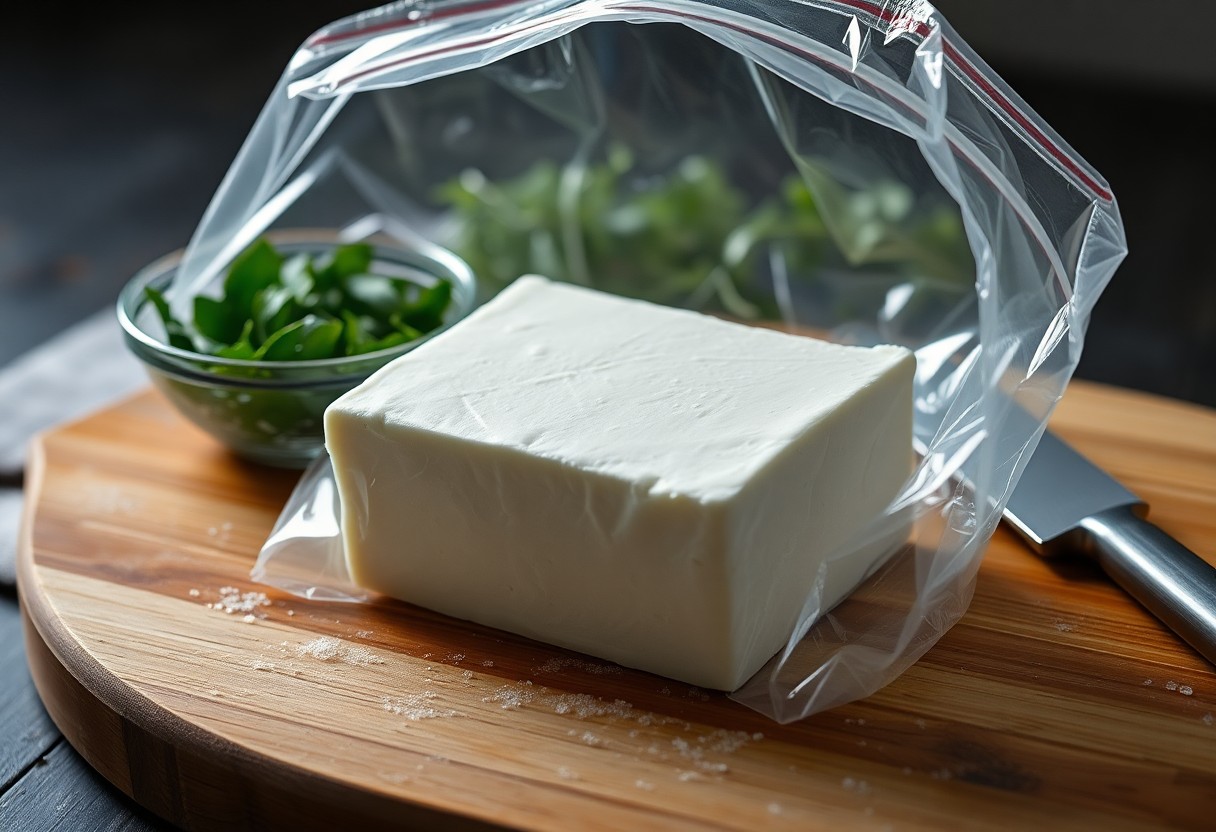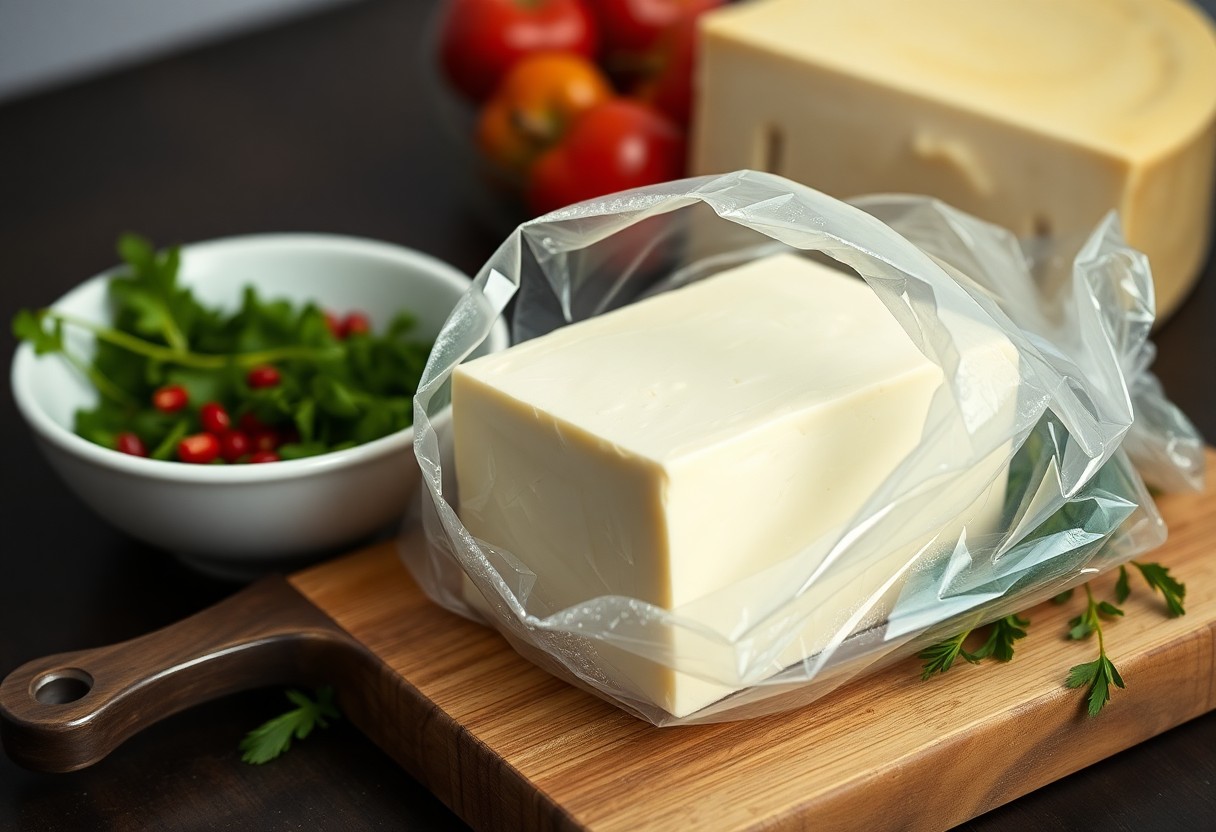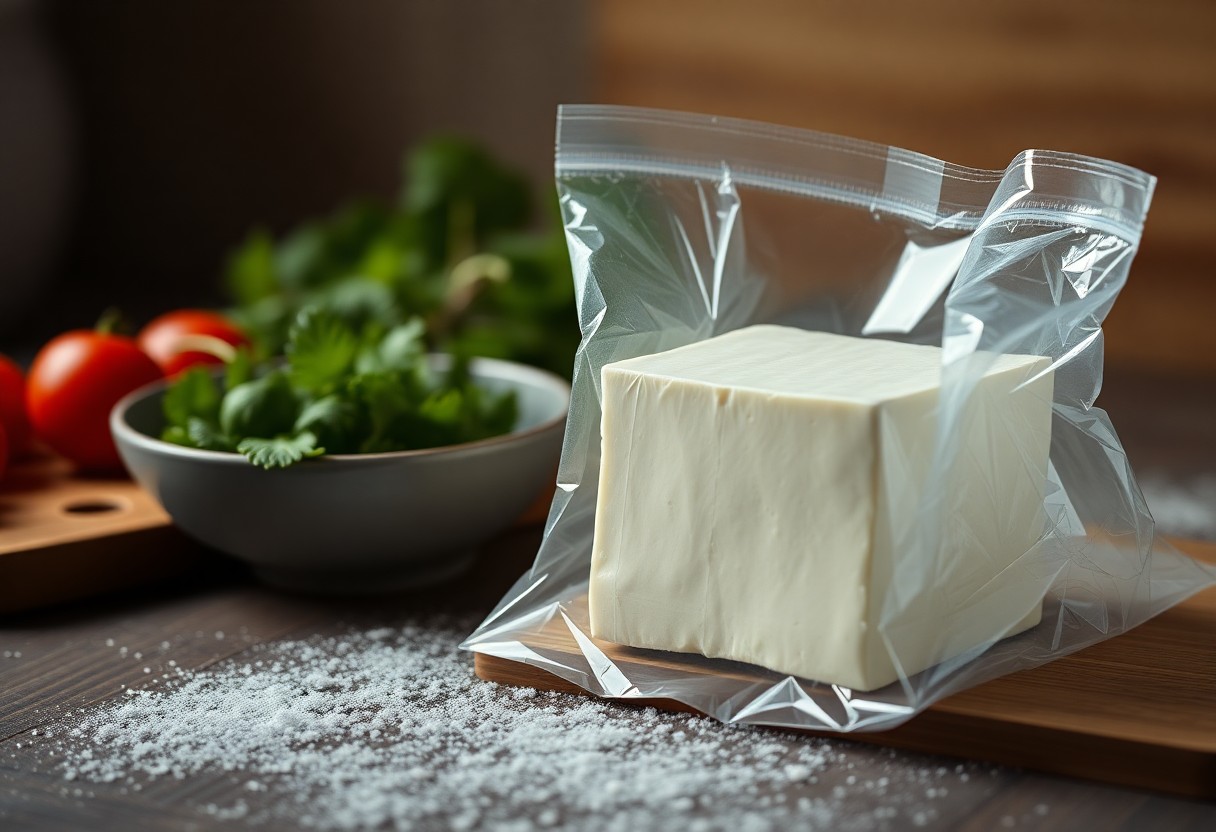As you consider preserving your feta cheese for a longer period, you may wonder if freezing is a viable option. You can indeed freeze feta, but it’s necessary to understand the effects on its texture and flavor. Your goal is to maintain the cheese’s quality, and with the right approach, you can successfully freeze and thaw feta for your future culinary needs.
What is Feta Cheese
To understand whether you can freeze feta, you first need to know what feta cheese is. Feta is a type of cheese that originated in Greece, known for its salty, tangy flavor and crumbly texture.
Origin and History
Following the tradition of cheese production in Greece, feta has been a staple in Greek cuisine for centuries, with its history dating back to the 8th century BC. You will find that feta is often associated with Greek cuisine and is a key ingredient in many traditional dishes.
Types of Feta
Around the world, you can find various types of feta, including:
- Dodoni
- Valasley
- Tsakoniki
- Graviera
- Manouri
. Perceiving the differences between these types can help you decide which one to use in your recipes.
| Type of Feta | Description |
|---|---|
| Dodoni | Salty and tangy |
| Valasley | Mild and creamy |
| Tsakoniki | Sharp and nutty |
| Graviera | Buttery and slightly sweet |
| Manouri | Soft and creamy |
Consequently, as you explore the world of feta, you will discover that each type has its unique characteristics and uses in cooking. You can find various types of feta, including:
- Frozen feta
- Sheep’s milk feta
- Goat’s milk feta
- Buffalo’s milk feta
- Cow’s milk feta
. Perceiving the variety of options available, you can choose the one that suits your taste and needs.
| Type of Milk | Characteristics |
|---|---|
| Sheep’s milk | Rich and creamy |
| Goat’s milk | Tangy and refreshing |
| Buffalo’s milk | Buttery and rich |
| Cow’s milk | Mild and smooth |
| Combination | Complex and unique |

Can You Freeze Feta
If you’re looking to preserve feta cheese for a longer period, freezing is a viable option. You can freeze feta, but it’s vital to consider the effects on its texture and taste. Freezing feta will help you keep it fresh for several months, and with proper storage, you can maintain its quality.
Effects on Texture and Taste
Before you decide to freeze your feta, consider that freezing will cause changes in its texture and taste. You may notice that frozen feta becomes crumblier and softer, which can affect its performance in certain recipes.
Freezing Methods
One of the most effective ways to freeze feta is to wrap it tightly in plastic wrap or aluminum foil. You should also consider vacuum-sealing or using airtight containers to prevent moisture and other flavors from affecting your feta.
This method of freezing will help you preserve the flavor and texture of your feta as much as possible. You can freeze feta in blocks, crumbled, or even sliced, depending on how you plan to use it in your recipes. By following these steps, you can enjoy your feta cheese for a longer period while maintaining its quality.

Benefits of Freezing Feta
While freezing feta, you can enjoy its rich flavor and texture for a longer period. Freezing helps preserve the cheese’s quality, allowing you to use it in various dishes throughout the year.
Preservation and Shelf Life
Benefits like extended shelf life make freezing feta a great option. You can store it for several months, maintaining its freshness and nutritional value, which is especially useful for your meal planning.
Convenience and Versatility
Preservation methods like freezing also offer you convenience. You can easily thaw and use frozen feta in your recipes, making it a versatile ingredient for your cooking needs.
Consequently, having frozen feta on hand allows you to explore a variety of dishes, from salads and pastries to pasta and pizzas, giving you the freedom to experiment with new recipes and flavors, making your mealtime more exciting and enjoyable.
How to Freeze Feta
Many people wonder if they can freeze feta, and the answer is yes. You can find more information on this topic on I have too much feta. Can I freeze it? : r/Chefit, where users share their experiences. When freezing feta, you should follow proper procedures to maintain its quality.
Preparation and Packaging
Below are the steps to prepare and package your feta for freezing. You will need to wrap your feta tightly in plastic wrap or aluminum foil to prevent air from reaching it, and then place it in an airtight container or freezer bag.
Storage and Thawing
Along with proper packaging, storing and thawing your feta correctly is important. You should store your frozen feta at 0°F (-18°C) or below, and when you’re ready to use it, simply thaw it in the refrigerator overnight.
Another thing to keep in mind when storing and thawing your feta is that it’s best to use it within a few months of freezing for optimal flavor and texture. You can also thaw frozen feta quickly by submerging it in cold water, but be sure to use it immediately to avoid spoilage. When you thaw your feta, you can use it in a variety of dishes, such as salads, pasta, and pizzas, and it will still have its distinctive tangy flavor.
Recipes Using Frozen Feta
Not only can you freeze feta, but you can also use it in a variety of dishes after thawing. Your frozen feta can be a great addition to many recipes, and you can explore different cuisines to find your favorite ways to use it.
Salads and Pastries
Recipe ideas for salads and pastries are endless, and you can use your frozen feta to add a tangy flavor to your dishes. You can try using it in a Greek salad or as a topping for your favorite pastry.
Main Courses and Appetizers
With your frozen feta, you can create delicious main courses and appetizers that will impress your guests. You can use it in stuffed chicken or as a topping for your favorite appetizer.
Due to the variety of ways you can use frozen feta, you can experiment with different recipes to find your favorite. You can try using it in spanakopita, a Greek spinach pie, or as a topping for your favorite flatbread, and you will find that your frozen feta is a great addition to many main courses and appetizers.
Common Mistakes to Avoid
Keep in mind that freezing feta requires attention to detail to maintain its quality and safety. You should be aware of the potential pitfalls to avoid when freezing this type of cheese.
Freezer Burn and Texture Changes
To prevent freezer burn and texture changes, you need to wrap your feta tightly and store it at 0°F (-18°C) or below. This will help preserve its flavor and texture.
Contamination and Safety
Below the surface of properly frozen feta, you may face contamination issues if you don’t handle it correctly. You should always check your feta for any signs of spoilage before consuming it.
Considering the potential risks associated with contamination, you should take steps to ensure your feta is stored and handled safely. You can do this by labeling and dating your frozen feta, and storing it in a clean and dry environment, away from strong-smelling foods that may transfer odors to your cheese. This will help you enjoy your frozen feta while minimizing the risk of contamination and foodborne illness.
Conclusion
So, you now know that you can freeze feta to extend its shelf life. You can safely store it in your freezer for up to 8 months. When you’re ready, you can thaw and use it in your favorite recipes. Your frozen feta will retain its flavor and texture, allowing you to enjoy it throughout the year.
FAQ
Q: Can you freeze feta cheese to preserve it for a longer period?
A: Yes, you can freeze feta cheese to extend its shelf life. Feta cheese can be safely frozen for up to 6-8 months. It’s best to freeze it when it’s fresh, as this will help maintain its quality and texture. To freeze feta, wrap it tightly in plastic wrap or aluminum foil and place it in a freezer-safe bag or container. When you’re ready to use it, simply thaw the feta in the refrigerator or at room temperature.
Q: How does freezing affect the texture and taste of feta cheese?
A: Freezing feta cheese can cause it to become slightly softer and more crumbly than its fresh counterpart. However, this change in texture does not significantly affect its taste. The flavor of the feta remains relatively unchanged, and it can still be used in various recipes, such as salads, pasta dishes, and as a topping for bread. If you’re concerned about texture, you can try freezing feta in smaller blocks or crumbles, which will make it easier to thaw and use as needed.
Q: What is the best way to thaw frozen feta cheese?
A: The best way to thaw frozen feta cheese is to place it in the refrigerator overnight, allowing it to thaw slowly and safely. You can also thaw feta at room temperature, but it’s crucial to use it immediately to prevent bacterial growth. Avoid thawing feta in warm water or at high temperatures, as this can cause the cheese to become too soft or separate. Once thawed, use the feta within a few days, and always check for any signs of spoilage before consuming it.





Leave a Reply